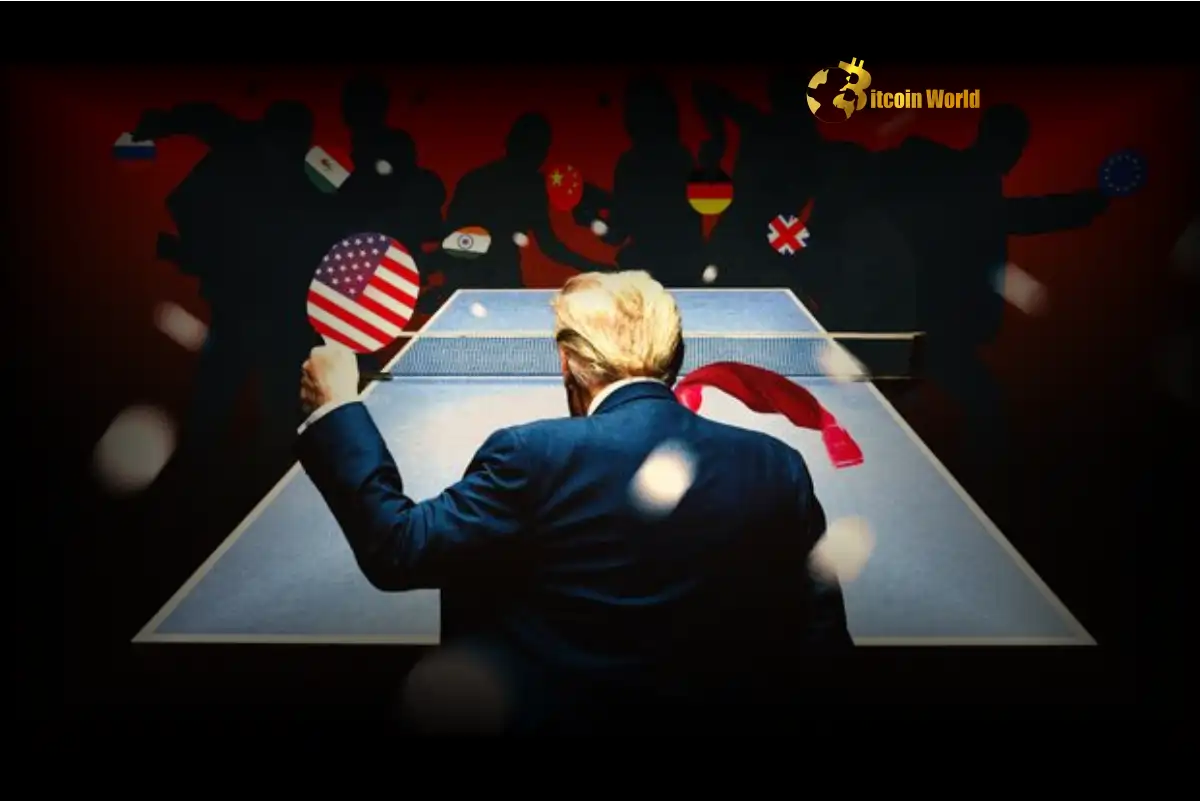Crucial Trump Tariffs Move: Potential Cuts Could Reshape US China Trade
0
0

In the ever-shifting landscape of global economics, trade policies often act as significant market movers. For those keeping an eye on everything from traditional stocks to the dynamic world of cryptocurrencies, understanding these potential shifts is key. A recent report suggests the Trump administration is considering a notable change that could significantly impact US China Trade relations: substantial cuts to existing Trump Tariffs on Chinese imports.
Understanding the Current Landscape of Trump Tariffs
For years, trade relations between the United States and China have been characterized by elevated tariffs, often described as a ‘trade war’. These tariffs were implemented with various goals, including addressing trade imbalances, protecting domestic industries, and compelling China to alter certain trade practices. The current tariff rates on many Chinese goods remain high, adding significant costs for importers and, ultimately, consumers.
However, according to reports citing sources familiar with the discussions within the Trump administration, there’s now a potential pivot. The core idea being explored is a reduction in these tariffs, potentially bringing them down by a considerable margin.
What’s Driving the Potential Shift in China Tariffs?
The primary driver behind this consideration appears to be a desire to ease the ongoing trade tensions between the two economic powerhouses. Prolonged trade disputes can create uncertainty, disrupt supply chains, and negatively impact global economic growth. A move to lower China Tariffs could be seen as an olive branch, a way to de-escalate the situation and foster a more cooperative trade environment.
Other factors potentially influencing this decision could include:
- Economic Considerations: High tariffs can contribute to increased costs for businesses and consumers. Reducing them could potentially help lower inflation or stimulate economic activity.
- Geopolitical Strategy: Easing tensions with a major global player like China could be part of a broader foreign policy strategy.
- Domestic Political Factors: Trade policies can have varying impacts on different sectors and regions within the US, and domestic political considerations often play a role in policy reviews.
Exploring the Proposed Tiered System for Import Tariffs
The proposal isn’t just a blanket reduction. Reports indicate that the discussion involves a tiered system for the potential cuts to Import Tariffs. This suggests a nuanced approach rather than a simple across-the-board change.
While the specifics are still under wraps and no final decision has been made, the concept involves:
- Lower Rates for Non-Strategic Items: Goods deemed less critical from a national security or strategic economic perspective might see the most significant tariff reductions.
- Higher Rates for National Security-Related Goods: Items considered sensitive due to their connection to national security or critical infrastructure would likely retain higher tariff rates, albeit potentially still reduced from current levels.
The reported range for the potential cuts is significant, falling between 50% and 65% of the current rates. This indicates a willingness to make substantial adjustments if the plan moves forward.
Potential Impacts on US China Trade Relations
Should these proposed cuts to Trump Tariffs come to fruition, they could have far-reaching effects on US China Trade and the global economy. The immediate impact would likely be a reduction in the cost of importing goods from China into the United States. This could benefit:
Businesses:
- Lower input costs for companies relying on Chinese components or finished goods.
- Increased competitiveness for products using imported materials.
- Potential for expanded trade volumes.
Consumers:
- Potentially lower prices on a wide range of consumer goods.
- Increased availability of certain products.
However, there could also be challenges:
Domestic Industries:
- Increased competition from lower-priced imports.
- Potential pressure on domestically produced goods.
Geopolitical Nuances:
- How China responds to such a move remains to be seen.
- Other trading partners might react to shifts in US-China policy.
Is This the End of the Trade War as We Know It?
While a significant reduction in Import Tariffs would undoubtedly signal a de-escalation, it’s premature to declare a definitive end to the ‘Trade War‘. Trade relations between major global economies are complex and influenced by numerous factors beyond just tariff rates, including intellectual property rights, market access, subsidies, and geopolitical competition.
This potential move might be a step towards a more stable relationship, but it’s unlikely to resolve all underlying trade disagreements instantly. It could, however, pave the way for further negotiations and a gradual improvement in the trade environment.
It’s crucial to remember that these are currently just considerations within the administration. No final decision has been reached, and the actual implementation, if it happens, could differ from the details currently being discussed. The situation remains fluid, and market participants, including those in the crypto space who monitor global economic health, will be watching closely for further developments.
This potential shift highlights how interconnected global markets are. Changes in trade policy, even seemingly distant ones, can create ripples that affect supply chains, inflation expectations, and overall economic sentiment, all of which can indirectly influence investment decisions across various asset classes.
To learn more about the latest global market trends and trade policy impacts, explore our articles on key developments shaping the economic landscape and potential future price action.
0
0
 Manage all your crypto, NFT and DeFi from one place
Manage all your crypto, NFT and DeFi from one placeSecurely connect the portfolio you’re using to start.





